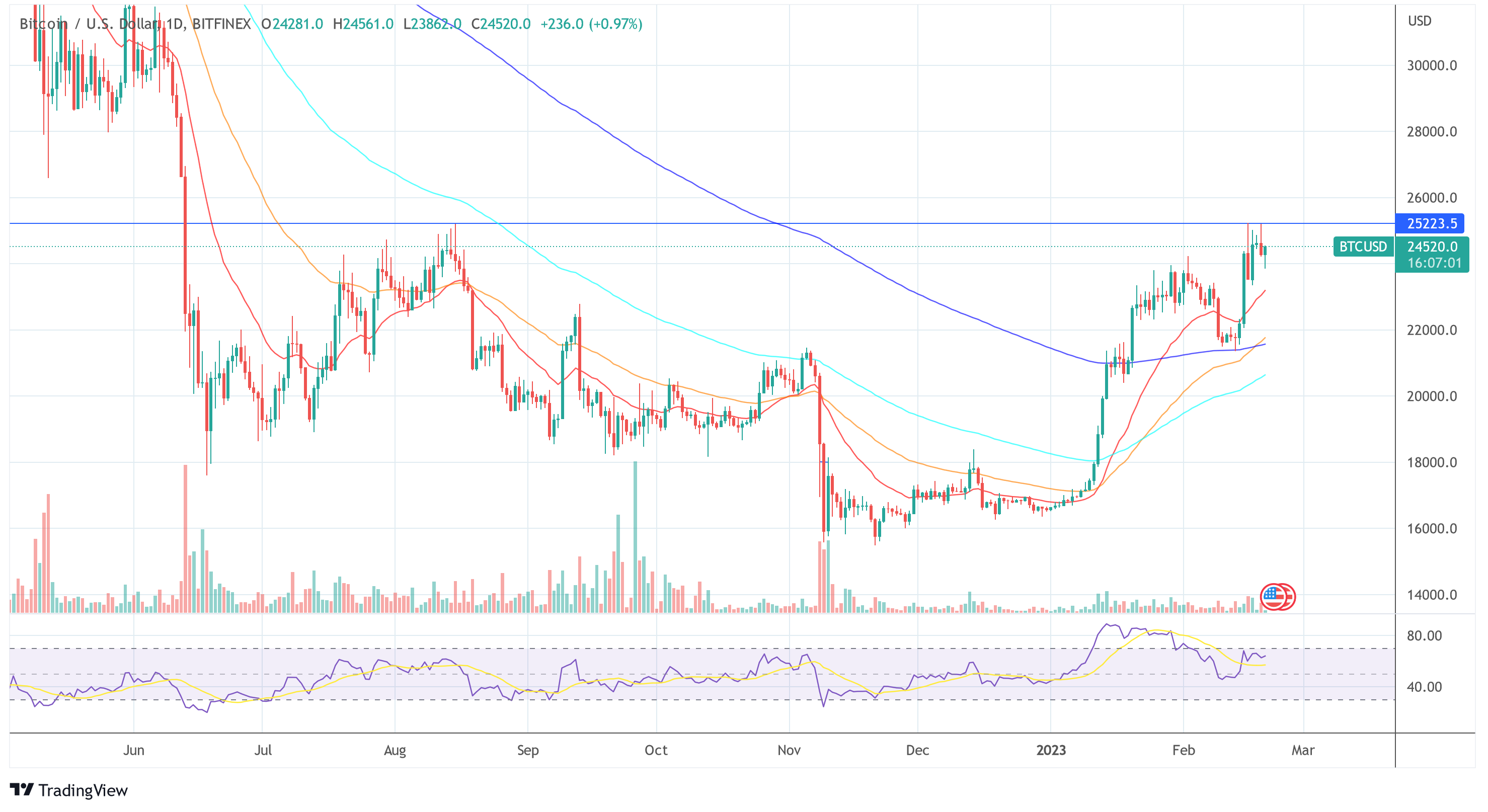Once again, this week will bring major macroeconomic data for the bitcoin and cryptocurrency markets, which investors should pay attention to. While Bitcoin has steadily managed to break its correlation with the S&P 500 and the Dollar Index (DXY) in recent weeks, it is likely that the Fed’s monetary policy will continue to have a strong impact on digital currencies.
And although the week got off to a quiet start, there are a couple of macros events This week could be important. First, however, the US stock market starts with a day off because of Presidents’ Day, while quarterly earnings run from Tuesday through Friday.
In particular, major retailers could test the strength of the US stock market rally in the coming week as investors get a glimpse of the health of consumer spending and the impact of inflation on corporate earnings. On Tuesday, Walmart and Home Depot will release their reports.
The damper in the bitcoin rally?
But on Wednesday, January 22nd at 2:00 PM EST comes the first major event, the FOMC meeting minutes. This is a detailed report of the last meeting of the Federal Open Market Committee on February 1, providing in-depth insights into the economic and financial conditions that influenced the interest rate vote.
Financial investors and Bitcoin are likely to pay more attention this time around, as several Fed speakers said last week that the rate decision was not unanimous and supported a 50 basis point increase. There were also higher CPI revisions and a higher report for January last week.
Based on this negative data, some voices are suggesting that the Fed may use the minutes to make some sneaky corrections. The Fed’s meeting minutes may hint at an imminent hike in interest rates and cause financial markets to crash.
In addition, Powell noted that the minutes will provide insight into what the Fed will decide to do when they stop the rate hike cycle – which is also a very important data point for financial markets.
Moreover, the Fed is likely to reverse its willingness to obtain multi-month inflation data, which indicates that the Fed is on track to reach the 2% target. Here, the focus will be on the still very tight labor market, where wage pressures are out of step with the 2% inflation rate.
So bitcoin investors should watch the FOMC minutes closely to see if the Fed is doubling down on its hawkish stance. If so, it is likely that the latest bitcoin chapter will be tested.
The second major event of the week follows on Friday, February 24, when the Core PCE Price Index is released. The Personal Consumption Expenditures Price Index is the Fed’s preferred measure of inflation because it reflects consumer spending habits more in a timely manner than the Consumer Price Index (CPI).
Core means that it excludes food and energy prices that are more volatile and seasonal than PCE. Since Oct. 28, the core PCE index has fallen from 5.1% to 4.4% year-on-year as recently as January.
This time, it is expected to have risen 0.4% in January, up from 0.3% in December and 4.3% year-on-year. In the event of a negative surprise and PCE coming in above expectations, concerns about flat inflation are likely to become more entrenched. This could also be a damper on the price of Bitcoin as well.
At press time, bitcoin price is holding at $24,520 after being rejected at the crucial resistance at $25,223 again.

Featured image from iStock, chart from TradingView.com

